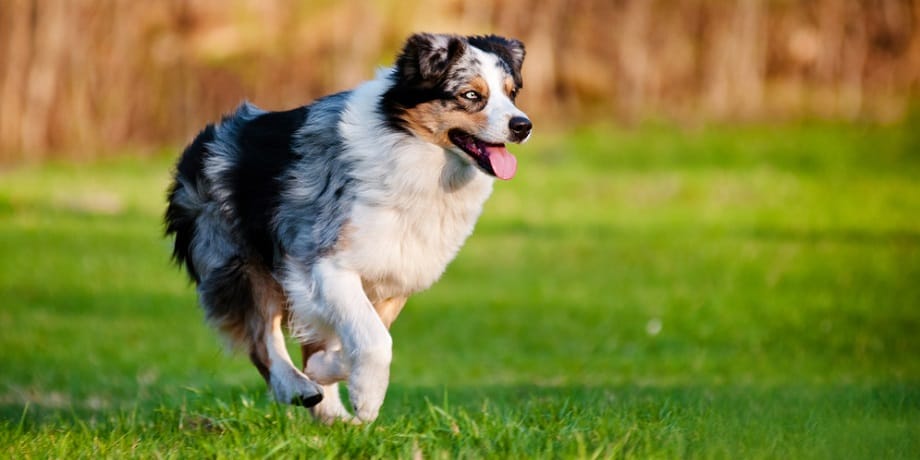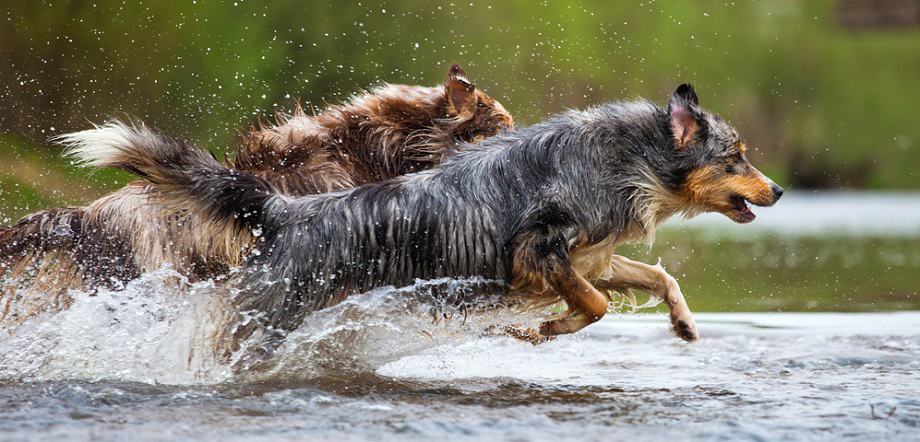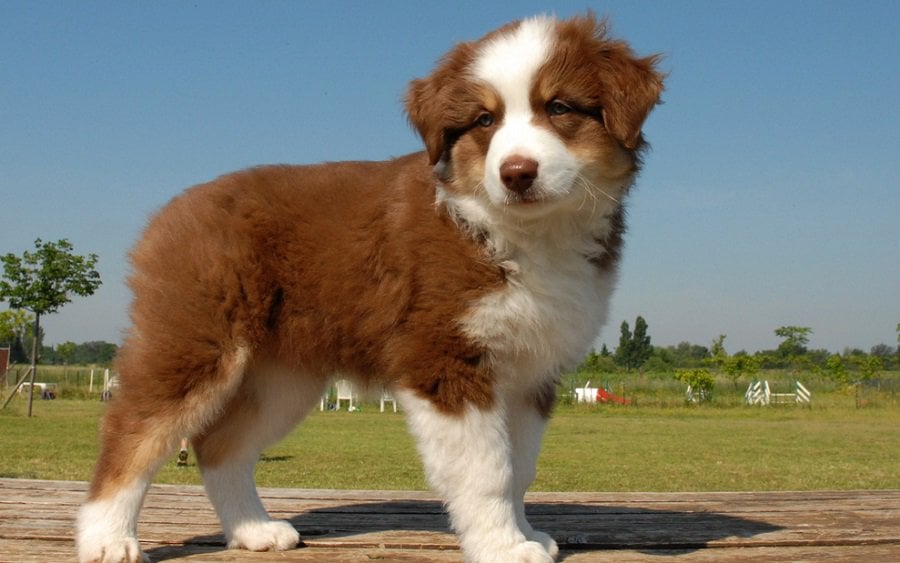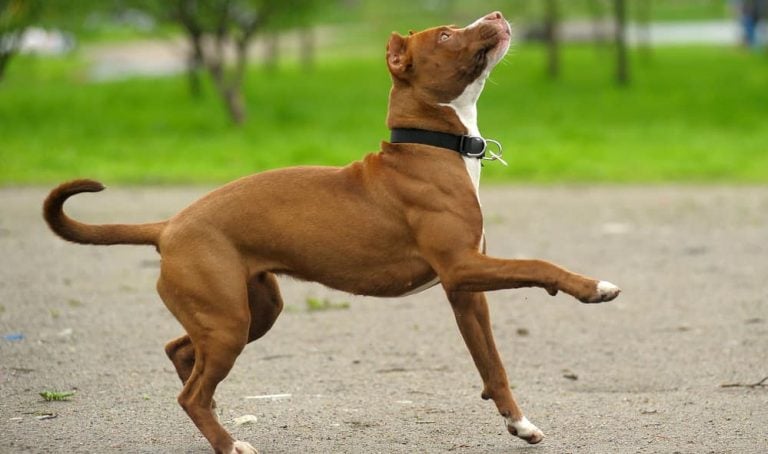Australian Shepherd Tail – Do Australian Shepherds Have Tails?
Have you been spending most of your time online looking at the delightful photos of Australian Shepherds because you want to get one for yourself?
Have you noticed something strange about their tail area and curious whether they are naturally tailless or not?
So, do Australian Shepherds have tails? This depends on certain factors. This article will provide you with all the information that you need to know about the Australian Shepherd tail.
Are Australian Shepherds Born With Or Without A Tail?

Australian Shepherds have tails. The standards of the American Kennel Club show that the tail of Australian Shepherd is either naturally bobbed or docked.
They are known to be among dog breeds that do not have tails, but only one in five Australian Shepherds have naturally bobbed tails.
The kennel clubs such as CKC, AKC, and ASCA only recognize purebred Australian Shepherd with a tail length not exceeding 4 inches, but normal tail length is always more than that.
51% of Aussies born with tails that are bobbed are reported to have absent or very short tails.
A small number of Australian Shepherds with ‘very short’ tails do not have to be docked and they will pass the kennel club’s standards.
Therefore, Aussies have tails, and the question should be whether they are visible or not.
What Genes Create The Natural Bobbed Tail?
There is an incomplete dominant gene that causes Australian Shepherds to have naturally bobbed tails. The natural mutation of the T Locus gene can make Aussies have a ‘short’ naturally bobbed tail.
Here is a summary showing the genetics that creates a naturally bobbed tail in Aussies. BT represents a recessive T-gene for Natural Bobtail while N represents Normal for a dominant T-gene for No Natural Bobtail.
- N/N – there is no variant for natural bobtail. This means that the Australian Shepherd will have a normal length tail. Also, they will not pass a variant of the natural bobtail to their puppies.
- N/BT – 50% of Aussies with this gene will likely have a natural bobtail. Australian Shepherds with the N/BT gene can transmit 25% of the embryonic lethal variant and 50% of the natural bobtail genotypes to their puppies.
- BT/BT – this is the embryonic lethal genotype that has two copies of the dominant T-gene and can result in the Aussie puppies dying in the uterus. Since this genotype can result in fetal death, there is no record of this gen in living Aussies.
Australian Shepherd With A Bobbed Tail vs. With A Normal Tail: Appearance

Australian Shepherds can vary between one with a normal full-length tail and another with a bobbed tail.
Australian Shepherds with a bobbed tail can either be manufactured or natural. Rare Aussies born with a bobbed tail can show absent tails. 47% of Australian Shepherds with natural bobtails have quarter-length tails.
Additionally, it can be difficult to differentiate Aussies that have gone through a docking procedure from those that have naturally bobbed tails as they appear the same.
It is easy to distinguish Aussies with a normal tail from those with ‘very short’ natural bobbed tails. Australian Shepherds with normal tails exceed 4 inches which is the traditional length accepted by the kennel club’s standards.
Australian Shepherds with normal tails often go through traditional docking procedures before docking was banned.
Aussies with normal tails that are full length often have fur that is as lengthy as the tail, meaning taking care of it can be difficult due to the increased tail tangling and matting.
The Controversy About Breeding Bobtailed Australian Shepherds
As mentioned earlier, Australian Shepherds carrying the dominant T-gene can lead to fatal deaths.
The Australian Shepherd Health and Genetics Institute (ASHGI) states that bobtailed Australian Shepherds have defects that are common among the breed and cannot be ignored by health organizations of pets.
2% of Australian Shepherds born with natural bobtails developed defects related to natural bobtails. When Aussies with bobtails are bred, the puppies can develop serious defects in the lower spinal cord or Spina Bifida.
Kinked tails are another minor defect that does not pose a health risk, but it can be unpleasant for Aussies to have. The reabsorption of fetuses increases the risk of having small litters.
This controversy reminds breeders to avoid breeding two Aussies that have naturally bobbed tails as it can lead to fetal death or severe health issues.
Bobtail Australian Shepherd Potential Health Issues

If you own a bobtailed Australian Shepherd or planning to own one, you should familiarize yourself with the possible health issues that can affect them.
Below are some of the potential health issues related to a bobtailed Australian Shepherd:
- Spina Bifida – this is a condition that affects the lower side of the spinal cord in Australian Shepherds can prevent the vertebrae from fully developing. This congenital abnormality in the spine is inherited and can lead to the incomplete formation of the vertebrae in the embryo. Depending on the severity of the condition, the Aussie can have exposed or completely malformed spinal cord.
- Transitional Vertebrae – congenitally malformed vertebrae frequently occur in the lumbosacral region in your Aussie. If your Australian Shepherd is active and frequently does activities that need spinal flexibility, it can lead to increased wear and tear.
- Imperforate Anus – this congenital defect is a type of atresia ani common in dogs where their anal openings do not fully form. If this condition is not treated or correct, it can be fatal for your Aussie.
- Neuroma – this is where the dog’s tail develops a nerve tumor that makes them snappy and can also cause pain whenever the tail is touched. It can also happen to an Aussie with a docked tail.
Reasons Why Breeders Dock Australian Shepherd Tails Instead
Docking is the removal of several portions of the tail of an animal through a surgical procedure.
Traditionally, ranchers and farmers remove parts of the tails of their Aussies to reduce injuries during hunting or herding and make them pass as sheepdogs.
However, in the mid-1880s the kennel club was established and tail docking among Australian Shepherds has been carried out for cosmetic purposes and to meet the standards for this breed.
The following are the most common reasons why breeders dock Aussie puppy’s tail:
- To meet the Kennel Club standard of this breed where purebred Australian Shepherds should not have tails exceeding four inches.
- Tails that are not docked can be too messy and long that it gets tangled or matted easily.
- If your Aussie engages in outdoor activities such as herding or running, docking their tail can minimize or prevent damage due to injuries related to wagging tails. Note that tail injuries are not only painful for your Aussie, but it can also be difficult to treat an injured tail.
- Another reason is good hygiene. Since Australian Shepherds have a thick coat, they can easily collect debris on their fluffy tails. Additionally, feces can get caught on the tail because it is near the anus, therefore, docking the tail can increase the hygiene of your dog.
Although tail docking is accepted by the kennel club standards for purebred Aussies and has been practiced by most enthusiasts for Australian Shepherds, there has been increasing opposition recently.
For example, the American Veterinary and Medical Association (AVMA) strongly opposes tail docking for cosmetic purposes because this practice is not medically indicated. Rather, it is done for appearance which is an unnecessary surgical procedure.
It is advised to check the policy of your country before docking your Aussie’s tail because some countries have banned docking in recent years especially if it is for cosmetic purposes.
What Is The Ideal Length For A Docked Tail Of An Aussie Shepherd?
According to the American Kennel Club, the preferred tail length for a full-sized Australian Shepherd is four inches. The kennel club also allows bobbed tails in the breed if they happen naturally.
Talk Docking Procedure: How And When Is It Done
Breeding Aussies with naturally bobbed tails have the risk of fatal health when the two T-genes are transferred to an offspring.
However, the docking length of the Australian Shepherd’s tail should not be more than four inches otherwise it will be faulty according to the kennel club standards.
Therefore, if your want to achieve the bobbed tail requirement, a safer approach is to dock their tail than breeding them purposely. So, what is the safest time to dock your Aussie’s tail?
Australian Shepherd puppies should get their tails docked within three to five days after birth. However, you can also dock the tails of older and larger breeds through surgery.
The following are two methods of docking your Australian Shepherd’s tail:
- Surgery – this method is mostly used by reputable breeders and veterinarians to cut tails using surgical scissors. Sutures are necessary for adult dogs and common for larger breeds. This means that cutting the cartilage, tendons, several nerves, and muscles. This process is also carried out without any pain killers or anesthesia.
- Binding – this method uses an orthodontic band and is a technique that is most recommended. The band cuts the blood supply to the Aussie’s tail end preventing its potential to grow. If the band is left for a long period, the tail will drop eventually.
Before deciding to dock your Aussie’s tail, research in-depth to get enough knowledge to ensure that you put the health of your puppy over aesthetics.
The Downsides Of Getting Your Aussie’s Tail Docked

Tail docking is very controversial in the dog world as it comes with its risks ranging from incontinence to chronic pain. The following are the downsides of docking your Aussie’s tail:
- Discomfort – most breeders state that puppies don’t feel the docking process, but they have developed the nervous system, therefore, it is impossible to not experience some discomfort.
- Chronic pain – some Aussies can experience chronic pain from the docking procedure. The lasting pain can be caused by secondary nerve spinal tumors or nerve sensitivity and can lead to serious pain around the tail area.
- Socialization – since dogs use their tail to communicate with other dogs, docking removes their ability to socialize properly, making playing with other dogs difficult for some Aussies.
- AVMA opposes it – tail docking is allowed but the American Veterinary and Medical Association opposes the procedure because of the unclear benefits and potential pain. Tail docking should be considered a major con especially if the AVMA opposes it.
- Incontinence – though rare, some Aussies can experience incontinence because of tail docking. This can lead to the dog not being able to properly hold the bladder which can affect their family down the line.
Tail Docking And Its Legal Aspect
The Australian Shepherd Club of America does not allow tail docking that causes unnecessary pain and risk for cosmetic purposes.
This is because if the procedure is done under anesthetic, it increases the risk of infection and blood loss as well as chronic tension that can be lasting in the hindquarter and back muscles after the procedure.
However, if the procedure is done for hygienic, standard, and working needs, it should be done by an experienced practitioner at the right time to ensure the risks of blood loss and infection are reduced.
Also, the breeder should use the hygienic procedure to care for the puppy once docked to ensure that the risk of infection is relatively small.
In the United States, the procedure of tail docking is widely common despite protests from certain quarters.
However, some states such as Vermont and New York have put some restrictions on the practice and passed a bill to make docking illegal.
In the United Kingdom, tail docking is banned except for the Spaniels, Retriever, and Point breeds that are vet certified and categorized as working dogs. In Canada, the procedure is largely banned.
The rest of the world is divided toward the approach of docking purpose and process. Most Southeast Asian countries do not restrict tail docking while other countries such as Sweden, Switzerland, and Norway ban the procedure completely.
Common Australian Shepherd Tail FAQs
Is Tail Docking Painful For The Dog?
Those advocating for tail docking claim that the procedure does not cause discomfort or pain as the puppies’ nervous system is not fully developed.
However, this is not the case because the nervous system is fully developed when the puppy is born. Also, puppies have the same sensitivity as adult dogs.
Docking involves cutting through the tail’s muscles, cartilage connections, tendons, and highly sensitive nerves.
The procedure is often done without pain relief or anesthesia which can make the puppy produce shrieking noises when the tail is cut and stitching the wound meaning that they experience some level of pain.
As the wound heals, the damage and inflammation to the tissues cause ongoing pain. Unnecessary surgery also increases the risk of health complications and infection.
Also, docking can lead to unavoidable and unnecessary distress and chronic pain to the dog.
What Is The Australian Shepherd Tail Docking Recovery Time?
If the docking is carried out within three to five days of age, the discomfort should last for around two to four days. However, if the procedure is done on older dogs, they may take a longer time to recover.
How Much Does The Procedure Cost?
It is recommended that you should dock your Aussie puppy before they turn 5 days old since if you wait for longer, the tail will get harder because of the calcium build-up.
Typically, tail docking will cost you around $15 to $35 for one puppy, but the cost can be higher if the procedure is done to the entire litter. The vet will charge an extra examination fee of about $45 to $75.
If the puppy is past 5 days old, a surgical procedure will be recommended by the vet which is more expensive because it involves a complex procedure and anesthesia.
Depending on the vet, a surgical procedure can cost you between $450 and $1100.
Final Words
From this article, Australian Shepherds have tails and can vary between a normal full-length and a bobbed tail.
Whether you decide to keep their full-length or dock it to become bobbed, there will not be much difference because they are both beautiful.
In addition, docking your Australian Shepherd is safer to get the bobbed tail than breeding them.
However, you should not conform to standards and trends because the overall welfare and wellness of your Aussie should come before aesthetics.






